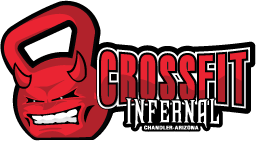I think one of the questions I am asked most often as a coach is, “Where should I set the damper on the rower?” Most people think that if they put the rower on 10, they are going to get more meters or calories in quicker.
I will start off by saying . . .
The damper is NOT an intensity or resistance setting. What the damper does is adjust the amount of air that is let into the flywheel housing. A higher damper setting allows more air in; which will require more work to get the wheel to spin. The more air in the housing will also slow the flywheel down faster, in turn requiring more work to accelerate to the next pull. On the opposite side, a lower setting will allow less air into the flywheel housing, making it easier for the wheel to spin.
So instead of thinking of the damper as a resistance setting, think of it like the gears on a bike. It will affect the feel, but not necessarily the intensity. The intensity of rowing is controlled by how much you are using your legs, back and arms on the pull; in other words how hard you are pulling the handle. Another comparison we can make is the difference in rowing a sleek racing boat, versus a slow, rowboat. Both will require intensity, but different kinds. The racing boat cuts through the water and will need faster pulling to get it moving and keep it moving at that speed. The bigger, rowboat will require slower, stronger pulls to move it. Both types of pulls – the lighter, faster and the slower, stronger – can be described as intense.
Ok, but how do we determine what damper setting we should set for ourselves? This is where some experimentation will come into play. If you are feeling like it is taking everything you have just to pull the handle back one time, it might be time to turn that setting down a couple notches. But if you feel like the wheel is not resetting fast enough to get a good pull each time, then move it up a bit. The most important thing that you need to do is to find a technique that will work best for you.
How about where the damper should be set in a short versus long row situation? This is also something that will vary for each individual, however you might want to change your normal setting depending on the distance. If you are doing a short distance, let’s say 500 m, this would be something of a sprint format. We can use a higher setting because we can produce strong pulls repeatedly for a short time. On the other hand, if you were doing a more aerobic workout with a longer distance in mind, then a lower setting would be more suitable. This will allow you to keep a steadier pace over the longer distance.
Don’t worry if the athlete next to you is using a higher setting than you during the WOD. Just make sure your technique is sound, and your pulls are as efficient as possible. And of course, be sure to talk to a coach about your rowing technique if you ever have a question, or need some pointers!
